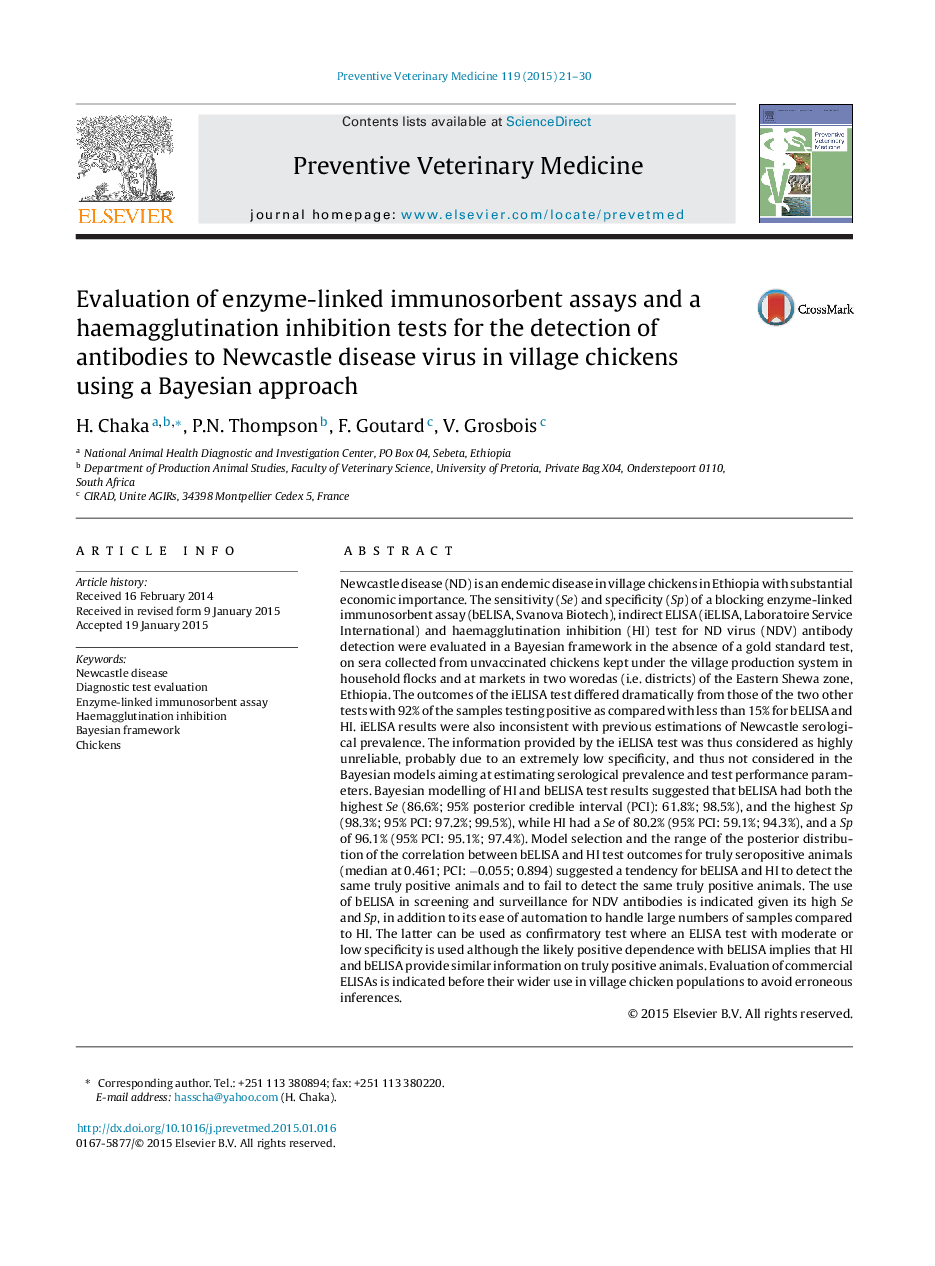| کد مقاله | کد نشریه | سال انتشار | مقاله انگلیسی | نسخه تمام متن |
|---|---|---|---|---|
| 2452407 | 1554171 | 2015 | 10 صفحه PDF | دانلود رایگان |

Newcastle disease (ND) is an endemic disease in village chickens in Ethiopia with substantial economic importance. The sensitivity (Se) and specificity (Sp) of a blocking enzyme-linked immunosorbent assay (bELISA, Svanova Biotech), indirect ELISA (iELISA, Laboratoire Service International) and haemagglutination inhibition (HI) test for ND virus (NDV) antibody detection were evaluated in a Bayesian framework in the absence of a gold standard test, on sera collected from unvaccinated chickens kept under the village production system in household flocks and at markets in two woredas (i.e. districts) of the Eastern Shewa zone, Ethiopia. The outcomes of the iELISA test differed dramatically from those of the two other tests with 92% of the samples testing positive as compared with less than 15% for bELISA and HI. iELISA results were also inconsistent with previous estimations of Newcastle serological prevalence. The information provided by the iELISA test was thus considered as highly unreliable, probably due to an extremely low specificity, and thus not considered in the Bayesian models aiming at estimating serological prevalence and test performance parameters. Bayesian modelling of HI and bELISA test results suggested that bELISA had both the highest Se (86.6%; 95% posterior credible interval (PCI): 61.8%; 98.5%), and the highest Sp (98.3%; 95% PCI: 97.2%; 99.5%), while HI had a Se of 80.2% (95% PCI: 59.1%; 94.3%), and a Sp of 96.1% (95% PCI: 95.1%; 97.4%). Model selection and the range of the posterior distribution of the correlation between bELISA and HI test outcomes for truly seropositive animals (median at 0.461; PCI: −0.055; 0.894) suggested a tendency for bELISA and HI to detect the same truly positive animals and to fail to detect the same truly positive animals. The use of bELISA in screening and surveillance for NDV antibodies is indicated given its high Se and Sp, in addition to its ease of automation to handle large numbers of samples compared to HI. The latter can be used as confirmatory test where an ELISA test with moderate or low specificity is used although the likely positive dependence with bELISA implies that HI and bELISA provide similar information on truly positive animals. Evaluation of commercial ELISAs is indicated before their wider use in village chicken populations to avoid erroneous inferences.
Journal: Preventive Veterinary Medicine - Volume 119, Issues 1–2, 1 April 2015, Pages 21–30